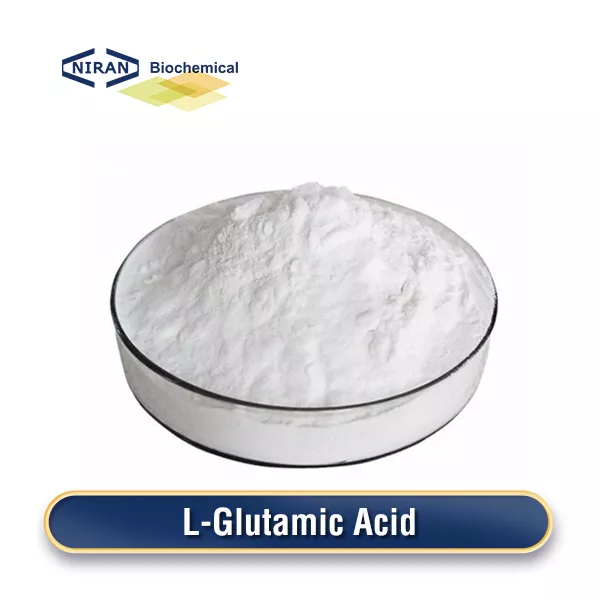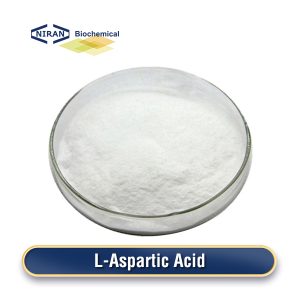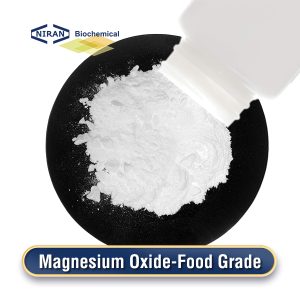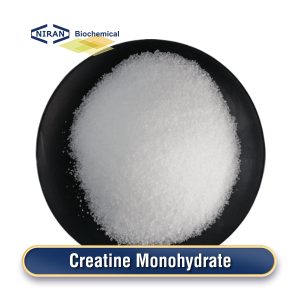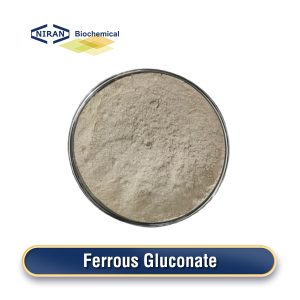Niran Biochemical
YOUR RELIABLE FOOD INGREDIENTS
Send Inquiry
Home » Products » Nutrition Enhancers » L-Glutamic Acid
L-Glutamic Acid
- CAS: 56-86-0
- Chemical Formula: C5H9NO4
- Certification: KOSHER, ISO, HALAL, FSSC22000, BRC, etc.
- Standard:
- MOQ: 1000KG
- Shelf Life: 2 Years
Inquire Product
Product Description
What Is L-Glutamic Acid?
L-Glutamic acid is an amino acid with the appearance of white crystalline powder, almost odorless, with a special taste and sourness, and is difficult to dissolve in water. It can be widely used in pharmaceuticals, food additives, nutritional enhancers, etc.
The main preparation processes of L-Glutamic acid are as follows:
1. The microbial fermentation method of L-glutamic acid is currently the most important production process, using specific strains to produce L-glutamic acid during the fermentation process. This method includes steps such as strain cultivation, fermentation, and separation and purification. It has the advantages of high production efficiency, wide sources of raw materials, and environmental protection, and is suitable for large-scale industrial production.
2. The chemical synthesis method synthesizes L-glutamic acid through chemical reactions. Although it was used in the early days, it is now less used due to high production costs and many by-products. This method includes steps such as preparation of reaction raw materials, chemical reactions, and separation and purification, but it is not as environmentally friendly and economical as the microbial fermentation method.
3. The enzyme conversion method uses enzymes to catalyze specific substrates to produce L-glutamic acid, with high production efficiency and good selectivity. This method involves substrate preparation, enzyme reaction, separation and purification, and is environmentally friendly, but it still needs further optimization and promotion in industrial applications.
Related Parameters:
| Items | Specification |
| Specific rotation [a]D20° | +30.5 °~ +32.5° |
| Chloride (Cl) | 0.02% max |
| Ammonium (NH4) | 0.02% max |
| Sulfate (SO4) | 0.02% max |
| Iron (Fe) | 10ppm max |
| Heavy metals (Pb) | 10ppm max |
| Cadmium | 1ppm max |
| Mercury | 0.1ppm max |
| Arsenic (AS2O3) | 1ppm max |
| Other amino acids | Conform to starndard. |
| Loss on drying | 0.5% max |
| Residue on ignition(sulfated) | 0.10% max |
| Assay | 98.5% to 100.5% |
| PH | 3.0 to3.5 |
Recommended Dosage:
| Food name | Maximum usage(g/kg) |
| Preserved food | 1.0-2.0 g/kg |
| Seasoning sauce | 1.5-3.0 g/kg |
| Sausage | 1.0-2.0 g/kg |
| Ham | 1.0-2.0 g/kg |
| Bacon | 1.0-2.0 g/kg |
| Canned meat | 1.0-2.0 g/kg |
| Canned fish | 1.0-2.0 g/kg |
| Chicken products | 1.0-2.0 g/kg |
| Seafood seasoning | 1.5-3.0 g/kg |
| Curry cubes | 1.5-3.0 g/kg |
| Seasoning chicken essence | 1.5-3.0 g/kg |
| Seasoning salt | 1.0-2.0 g/kg |
| Bread | 1.0-2.0 g/kg |
| Biscuits | 1.0-2.0 g/kg |
L-Glutamic Acid Has A Wide Range Of Uses
1. Enhance flavor: L-glutamic acid is an amino acid that naturally exists in many foods and has a unique umami flavor. As an important seasoning, it can significantly enhance the overall flavor of food and make it more delicious.
2. Improve protein utilization: L-glutamic acid, as an important amino acid, can promote the synthesis and utilization of protein in the body. Its addition to food can not only improve the nutritional value of food, but also enhance the body’s absorption and utilization of protein.
3. Improve food texture: L-glutamic acid can improve the texture and structure of food during food processing. It is added to flour products such as bread and noodles to increase the elasticity and extensibility of the dough, making the finished product softer and chewier. In addition, in dairy products and soy products, L-glutamic acid can improve the taste and texture stability of the product.
4. Improve food preservation: L-glutamic acid has a certain antioxidant effect, which can delay the oxidation process of food and extend the shelf life of food. Adding L-glutamic acid to pickled foods, canned foods and frozen foods can effectively prevent food spoilage and maintain the freshness and flavor of food.
5. As a nutritional supplement: L-glutamic acid is not only used for seasoning, but also widely used in health foods and functional foods as a nutritional supplement. It can provide the amino acids needed by the human body, promote physical health and immune function, and improve the overall nutritional level.
User Asked Question:
Q: Are L-glutamic acid and MSG the same?
A: L-glutamic acid and MSG (monosodium glutamate) have similarities in chemical composition, but they are not exactly the same. L-glutamic acid is an amino acid that occurs naturally in many foods and is used for nutritional supplements and seasonings; while MSG is the sodium salt of L-glutamic acid, which is mainly used as a flavoring agent to enhance the umami taste of food.
In terms of usage and production process, L-glutamic acid can be produced by natural extraction or microbial fermentation, and is widely used to improve the nutritional value and texture of food. MSG is produced by fermentation and is mainly added to soups, sauces and canned foods to enhance the umami effect.
Although moderate intake of L-glutamic acid is good for health, some people are more sensitive to MSG and may experience discomfort. Therefore, the use of MSG needs to be controlled within a reasonable range, while the use of L-glutamic acid as a nutrient is more widespread and safe.

